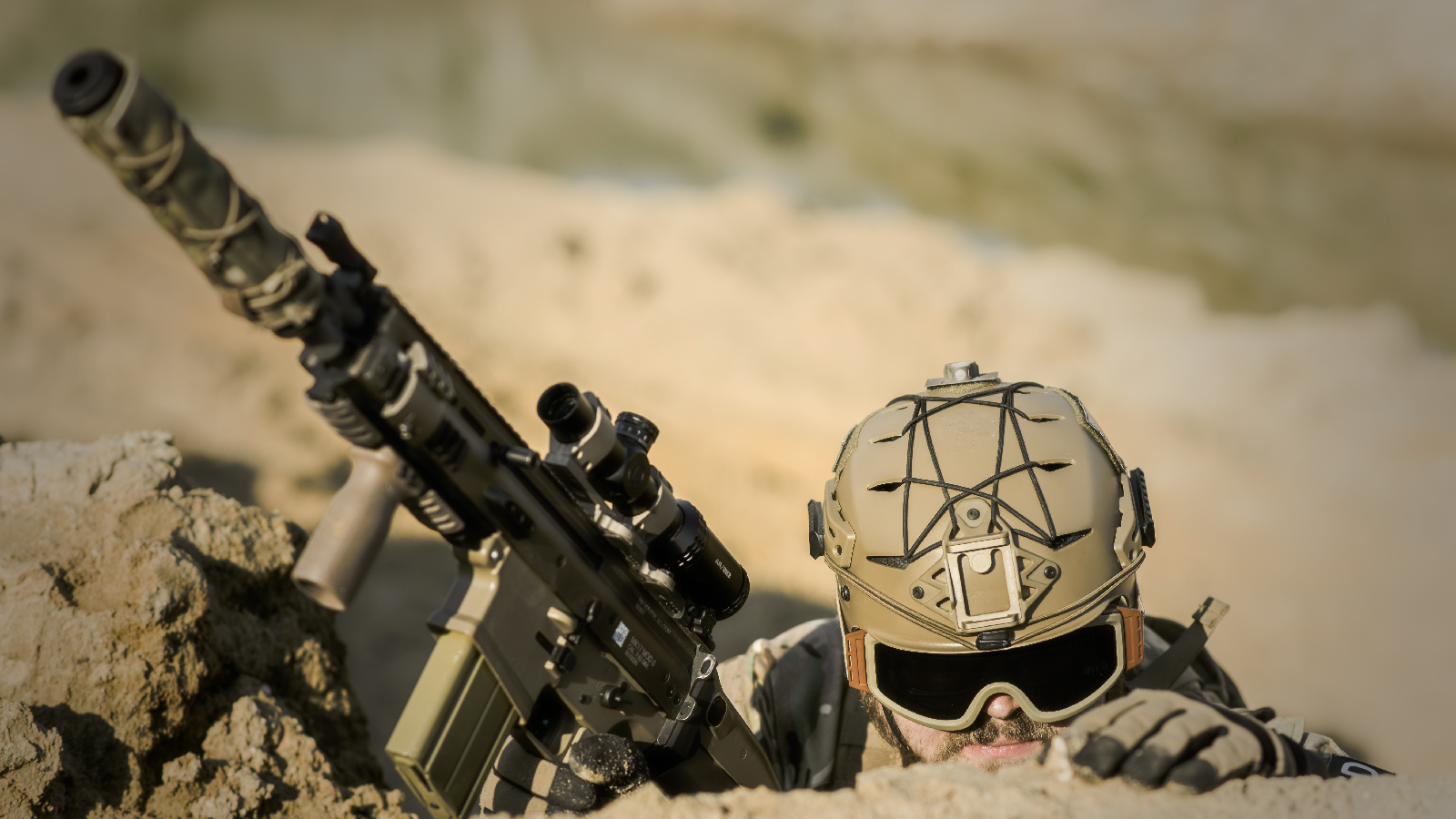If you’re familiar with the set-up of the espionage TV hit “The Americans,” then you’re at least vaguely familiar with the Soviet Union’s “illegals” program during the Cold War (and well into the modern day). Illegals simply meant intelligence officers working under deep cover, as opposed to intelligence officers who work out of the local embassy under cover as some other kind of government official. The American equivalent, in popular parlance, is the NOC — the “non-official cover” officer.
Both are the riskiest — and therefore for modern audiences the sexiest — version of intelligence officer, since they’re not afforded any kind of diplomatic protection if they’re caught spying. So, they get all the attention. But I want to talk about the guy in the photo at the top there. That guy.
That’s Oleg Burov (Costa Ronin), a Soviet intelligence officer in the show who arguably had a much harder job than the stars: he had to spy in Washington, D.C., right under the FBI’s nose, as a credentialed staff member of the Soviet embassy — which, unlike the illegals, means he was automatically under suspicion and likely under surveillance by American counter-intelligence agents the second he touched down in America.
Don’t take my word for it. Real-life declassified Soviet spy files, included in a declassified CIA journal, go into excruciating detail about just how hard it was to try and spy when working out of the embassy.
More From C&D: Nuclear and Radioactive Material Goes Missing All the TIme
At the time deteriorating relations between the U.S.S.R. and the U.S. had “given rise to a necessity to switch agent work, to the extent possible, to illegal methods. Yet the official base, which has to bear the brunt of operational work at present, will retain its importance for some time,” reads a 1960 Top Secret paper written for the Military-Diplomatic Academy of the Soviet Army. The paper was included in a 1964 edition of the CIA’s internal Studies in Intelligence journal.
The paper is almost an abbreviated training manual for officers meeting with human sources of intelligence, better known as agents. In movies and television, the audience usually sees the meeting itself but rarely the almost absurdly painstaking efforts made ahead of time to ensure no one is being followed — especially for officers who have to leave from the Russian embassy. A real example on the steps taken in one meeting as referenced in the Soviet paper:
Three intelligence officers took a car from the embassy towards their respective homes, but when they were almost there, two of them got out and went into a subway stop. The third, who was the driver, went to a “static post” near the meeting site and waited.
The two agents in the subway rode a few stops, changed trains, emerged from the subway in another part of town, went into a store and “shopped” for 40 minutes.
Then they took a taxi to another store, where they rode an escalator up to another level and then back down, and left out another exit.
The pair walked to another subway stop, got on, changed trains to the part of town opposite where the meeting was supposed to be, went to a restaurant and ate and hung out for more than an hour.
They then took the subway to a third store, at which point the driver — still in his static post — called the embassy, pretending to talk to his wife, to let them know in code the meeting site looked clean.
The pair of officers took the subway a third time, this time to a location about a 20-minute walk from the meeting location. One of the agents proceeded to the meeting site on foot, while the other joined the driver/officer back in a nearby car.
The officer and the agent walked to the agent’s car, at which point the agent handed over whatever material this whole meeting was meant for.
The officer got out of the car, took the intelligence material to a nearby store, where he passed it off to the driver, who left his car to meet the first officer there.
The driver was responsible for getting the material back to the Soviet embassy. Meanwhile the principle officer went back to the agent, and the two of them drove around for a while to discuss future operations.
Each officer made their way home on their own by public transportation.
The principle agent wired the Soviet resident [local head of intelligence operations, like a CIA station chief] in code that everything went well.
A helpful diagram tracking the movements for a meeting, included in the Soviet paper. (Studies in Intelligence)
That was one of three examples provided in the paper, and none were much simpler.
Related: The Real Value of Having a Foreign Agent in the President’s Circle
Former CIA officers, too, have discussed the complexity, and tedium, of operations that’s usually only suggested in popular fiction.
Mark Kelton, who spent more than three decades at the CIA, said meeting with agents sometimes involved “hundreds of hours” of prep work, especially focusing on what to do if things go sideways.
“There would be a lot of people involved, a lot of planning, a lot of preparations, a lot of ‘What ifs.’ If this happens, what happens? A lot of ‘Stump the Dummy’ questions. If he does this, what do you do? If he does that what do you do? Very thorough planning, very thorough,” he said at a talk about “The Americans” in June 2018.
“That’s the thing about the show, you all, you’re doing a lot of operations. We would never be able to sustain that pace of operations,” he said.
Related: What ‘The Americans’ Got Wrong (and Right) About Cold War Espionage (InsideHook)
Things get even more complicated when it’s necessary to have longer meetings with agents. In that case, the Soviet paper suggests the use of safe houses, or, apparently a personal favorite, coinciding fishing trips — but only at places that Soviets in the U.S. were not known to frequent.
Whether an illegal or a credentialed diplomat, the paper says that the safety of any espionage operation can come down to the wildcard that is the recruited agent.
“An agent is unreliable if he is timid or lacks self-confidence,” the paper says. “Such an agent can attract suspicion to himself by his timid behavior, whereas a bold and enterprising agent, behaving naturally in accordance with a good cover story, will not stand out from other local residents.”
The best case scenario was to somehow get an agent physically to the U.S.S.R., both for additional training in spycraft like radio operation and to provide an infusion of moral and ideological zeal. At the time, there were three good ways to get someone to the U.S.S.R.: they travel on their own documents to a third country and then pick up fake passports in another name to get to Moscow; they go to then-divided Berlin, travel to East Berlin, from there are quickly put on a flight to Moscow and are returned before anyone is the wiser; they somehow get to another country in the Soviet camp and travel from there to the U.S.S.R.
The paper references one agent who traveled through a third country and, while he was there, gave a Soviet intelligence officer several postcards from places he was supposed to be. The agent “mailed them off at intervals while the agent was in Moscow.”
The paper says that while American counter-intelligence efforts seemed to be getting more and more intense, it was still possible for officers to execute their missions with careful tradecraft. It warned, however, that the Americans were trying out a technological advance that could make life even more difficult: radios actually in their cars.
[Like what you see and read on Code and Dagger? Become a Patreon and help keep the lights on. Do you have a tip or question? Reach out at CodeAndDagger@protonmail.com.]












